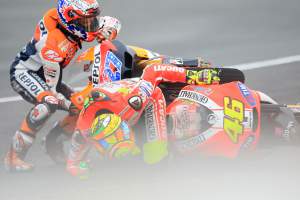until Abu Dhabi Autonomous Racing League

The only thing anyone will remember about Fabio Quartararo’s 2021 Catalan Grand Prix weekend is him riding bare-chested in the race and picking up two post-race penalties.
Yet the day prior he’d taken his fifth consecutive pole – a rare achievement that gets him inducted into a club chock full of MotoGP royalty.
Since MotoGP officially began to record pole positions in 1974, only 12 riders managed to grab five straight premier-class poles in a season. Just two of them don’t have premier-class titles to their names, and most are genuine legends. The only super-obvious absentee is Giacomo Agostini, and that’s only due to the ’74 cut-off – there’s virtually no doubt he’d had some massive pole streaks in the years immediately before that.
But a 500cc/MotoGP pole has never been a guarantee of much, and its exact value has varied as grand prix racing switched from five-bike front rows to four and then three bikes, from push starts to clutch starts and from parallel to stepped grid rows.
So has prolonged qualifying prowess historically translated to championship success? Let’s find out.
Max Biaggi, 2001
Yamaha
Average pole margin: 0.162s (5 races)
Champion? No
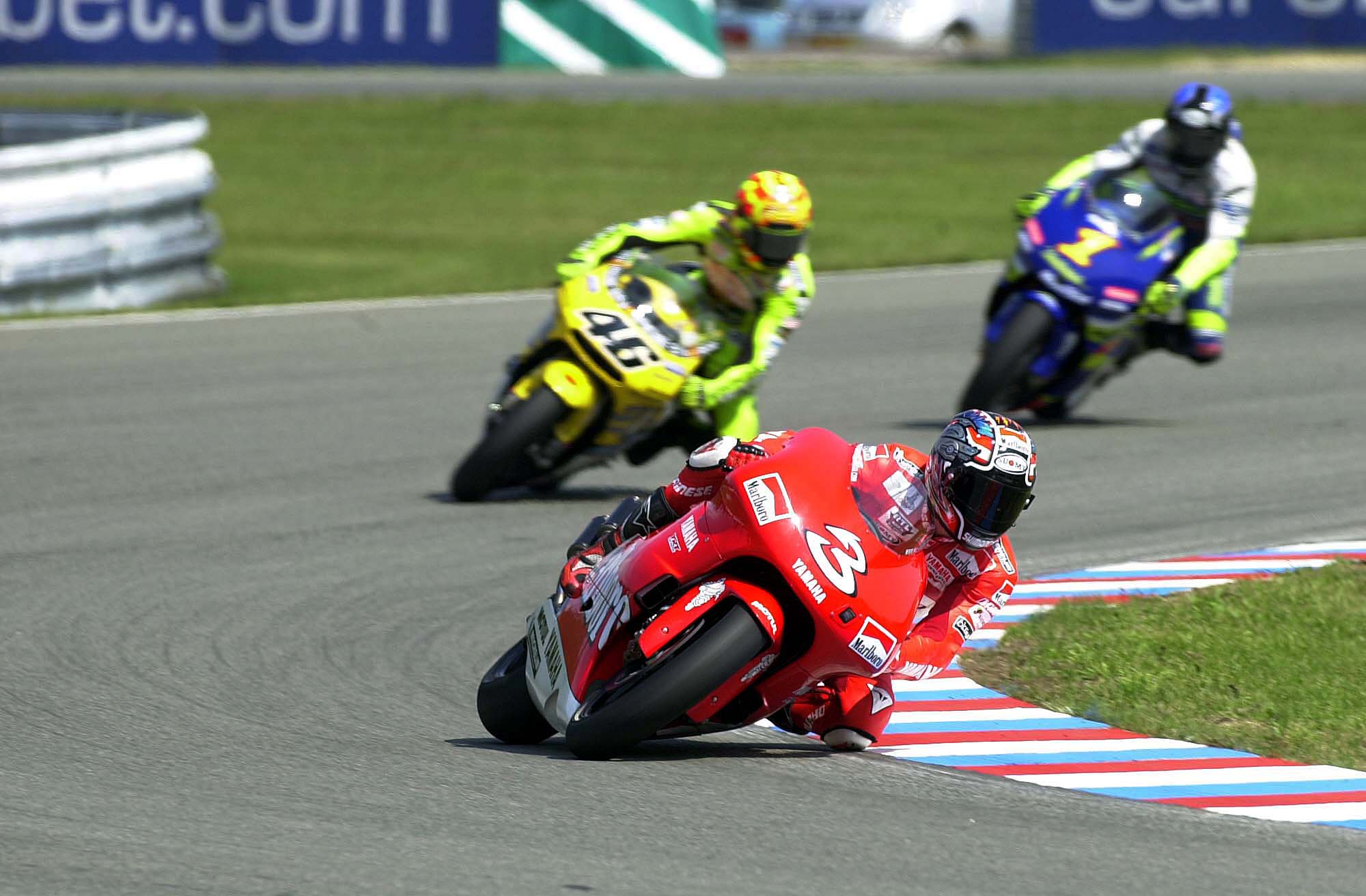
The first two poles of Max Biaggi’s five-race streak in 2001 could’ve easily formed the foundation of a lasting title push. He lost a British GP duel to Valentino Rossi but still scored good points, and then led a Yamaha 1-2-3-4 at the Sachsenring, closing right up on the Doctor heading into the summer break.
But though the poles continued after the resumption, the points dried up.
At Brno he fell while under pressure from Rossi, and at Estoril he fell while chasing his rival. He remounted in both cases, but big points were lost.
At Valencia, in the race that marked Sete Gibernau’s first win, Rossi faded badly with intermediate tyres on a drying track, but Biaggi fared little better from pole and only took one point off the eventual champion.
The pole streak was over at Motegi, but Biaggi actually led while crashing out under pressure from – who else? – Rossi coming out of the underpass. That de facto killed his title hopes, with Rossi then formally sealing the deal by beating Biaggi to Phillip Island victory by 0.013s.
Valentino Rossi, 2002
Honda
Average pole margin: 0.236s (5 races)
Champion? Yes
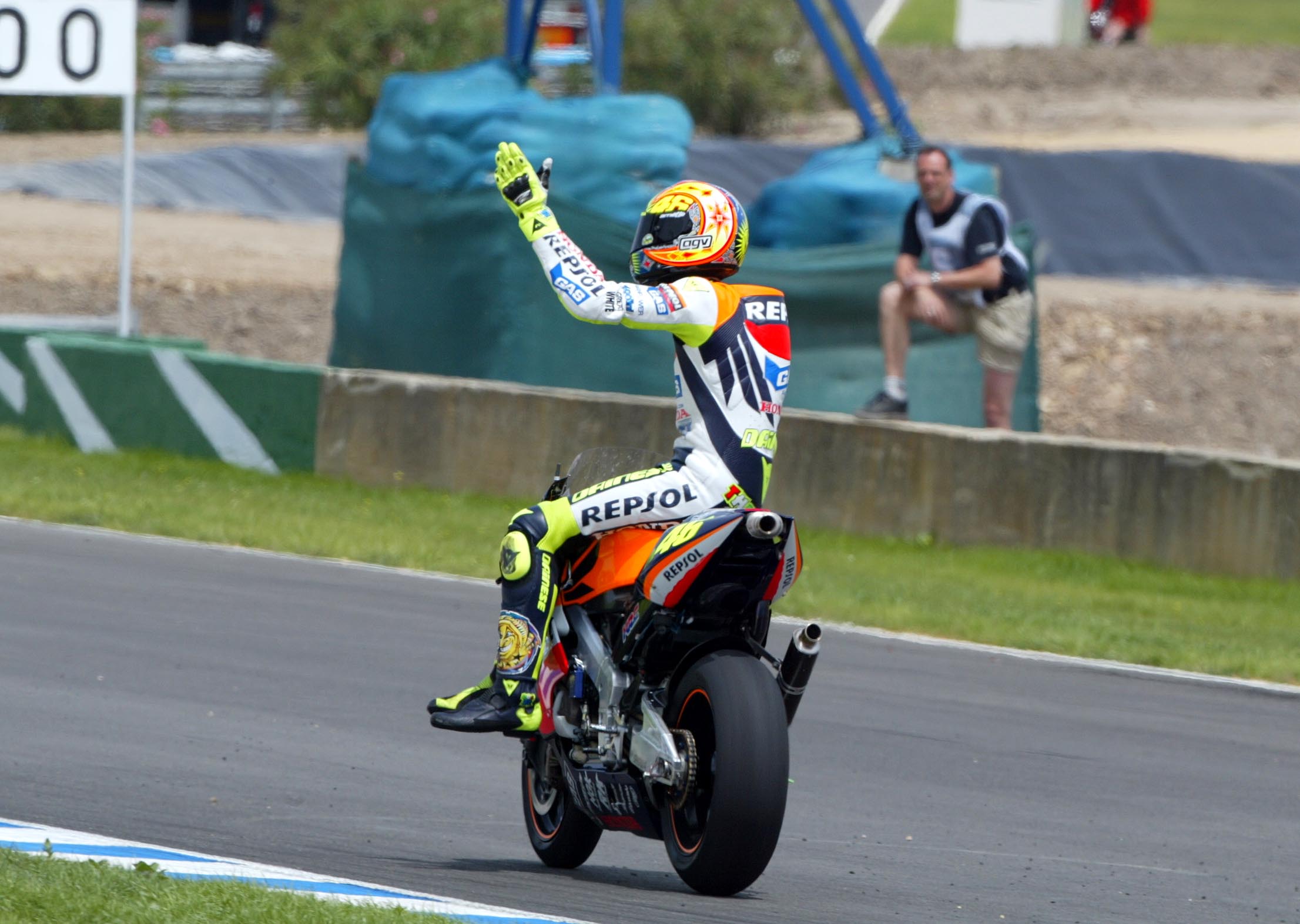
Rossi is not a bad qualifier by any stretch of the imagination, but he may just be MotoGP’s defining ‘Sunday man’. And so the one time that he strung together a large pole streak, it was clear that the opposition had no hope of making it a title fight.
Admittedly, when Rossi managed five straight poles right at the very start of the MotoGP era, the Sundays weren’t initially all that simple.
He was made to fight hard for the victory in the Suzuka opener by Akira Ryo, and was defeated by Honda team-mate Tohru Ukawa in a fun head-to-head battle at South Africa’s Phakisa Freeway.
At Jerez he had to fight back after being absolutely barged out of the way by Kenny Roberts Jr, and at Le Mans he’d only just overtaken Ukawa for the lead when a rain red flag ended the race.
But the points kept adding up, and by the time Rossi qualified only fourth in Barcelona to end the streak, he was already 43 ahead.
The rest of the season was about running up the score, and only his rear tyre shredding itself as he ran a close second at Brno denied Rossi a campaign of finishing first or second in every single race.
Casey Stoner, 2008
Ducati
Average pole margin: 0.466s (7 races)
Champion? No
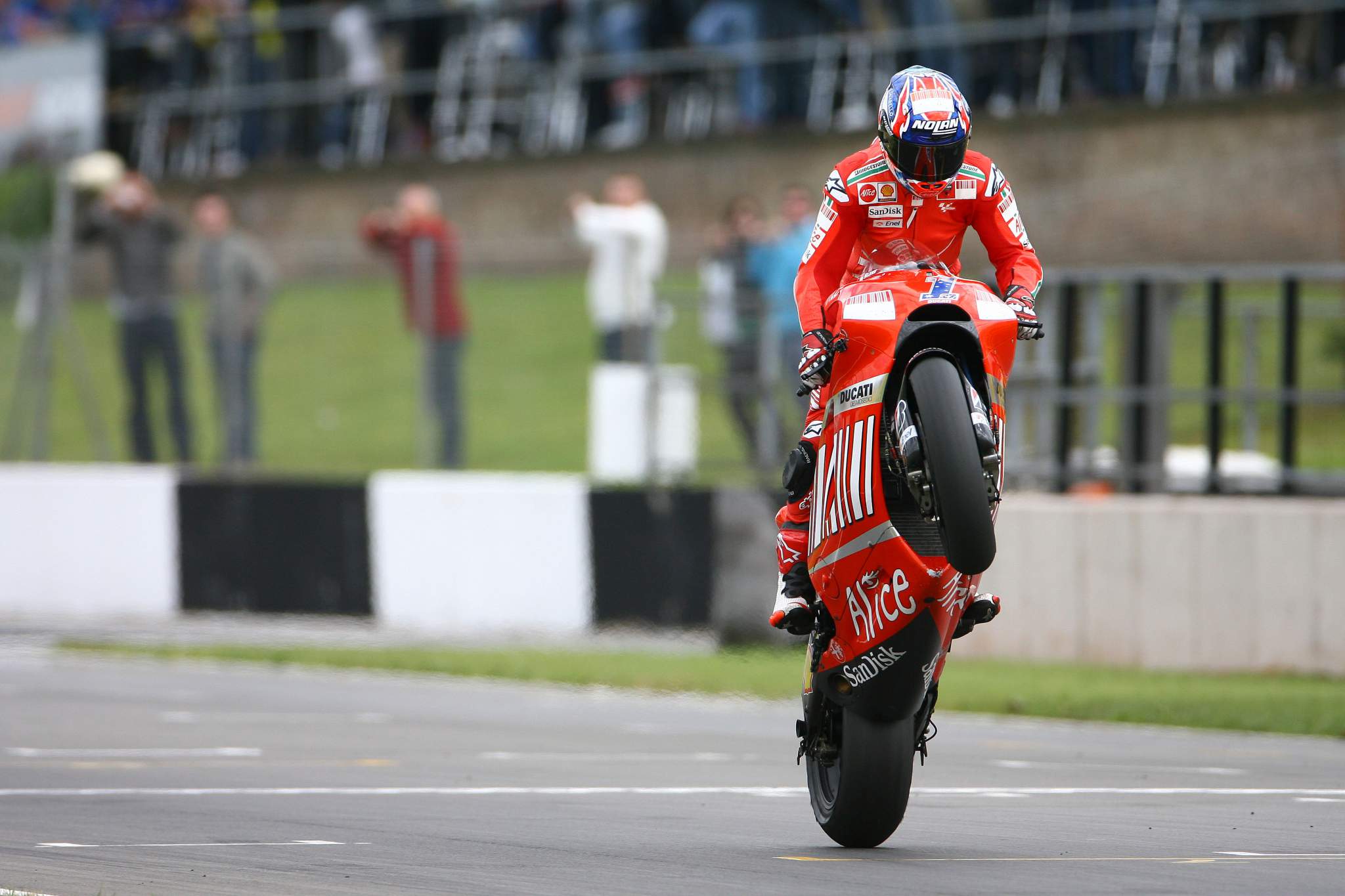
Casey Stoner took MotoGP by storm in 2007, but it was his doomed title defence that yielded a remarkable streak of seven consecutive poles.
Stoner’s championship was already on the ropes by the time the streak started at Barcelona, where pole was parlayed into a distant third place. But in the post-race test Ducati found a setting to smooth out the power delivery, revitalising its Aussie spearhead.
He won the next three races on the trot, albeit aided by Dani Pedrosa crashing out of a 7.5-second lead at the Sachsenring. And with Rossi having fallen and wiped out an unlucky Randy de Puniet, Stoner’s title defence was on, the gap down to 20 points.
But then Stoner lost that famed Laguna Seca duel that left him demanding “cleaner” racing from Rossi. And then he fell from the lead at both Brno and Misano, with the latter weekend also presenting the discovery that an old scaphoid fracture had “reopened”.
The title defence was over. “Valentino would have to break a leg and be out for a few races for me to get even close,” Stoner joked grimly.
But he felt he’d made his point. Rossi had joined Stoner in the Bridgestone camp after losing the 2007 title on Michelins, and it would pay off with the title, but Stoner saw his streak as proof positive that he was still the faster man on what was now the same rubber.
Mick Doohan, 1992
Honda
Average pole margin: 0.801s (6 races)
Champion? No
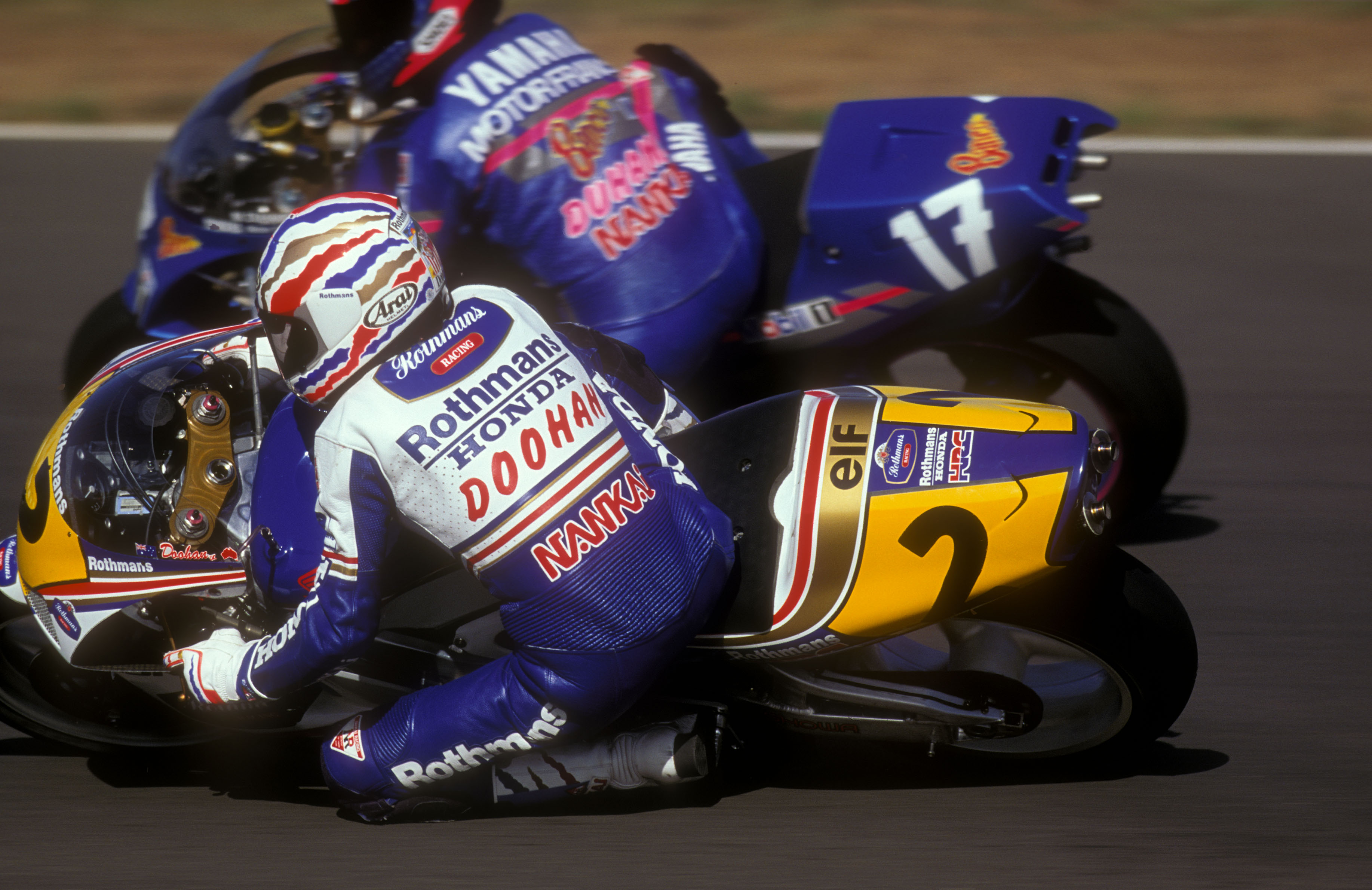
Speaking of losing a title through a broken leg, that was exactly what did it for Mick Doohan in 1992, the complications from his Assen crash proving so bad that he nearly had his right leg amputated.
At that point he was 53 points clear out front, and had strung together a streak of successive poles.
The first three of those were converted into wins, although while it was very easy at Eastern Creek and Jerez, the Malaysia race actually saw Doohan slip to as low as ninth after a rain-induced red flag and restart – only to win anyway.
That run of form meant he could easily afford to lose out to Kevin Schwantz at Mugello and Wayne Rainey by half a tenth at Barcelona, especially as Rainey had fallen out of the lead in Italy.
Rainey then crashed hard in qualifying at the Hockenheim and subsequently only lasted for just over half the race distance. He would surely have to kiss goodbye to his hopes of a 500cc three-peat, especially Doohan had converted a sixth straight pole into a dominant win.
But then came Doohan’s Assen crash and all the body horror followed. Rainey regrouped, and though a not-yet-fit Doohan was back for the final two races, the American did enough to get ahead.
Doohan had led the points after every race but the last one. He would have to wait until 1994 to begin his premier-class title streak.
Marco Lucchinelli, 1981
Roberto Gallina Suzuki
Average pole margin: 0.458s (6 races)
Champion? Yes
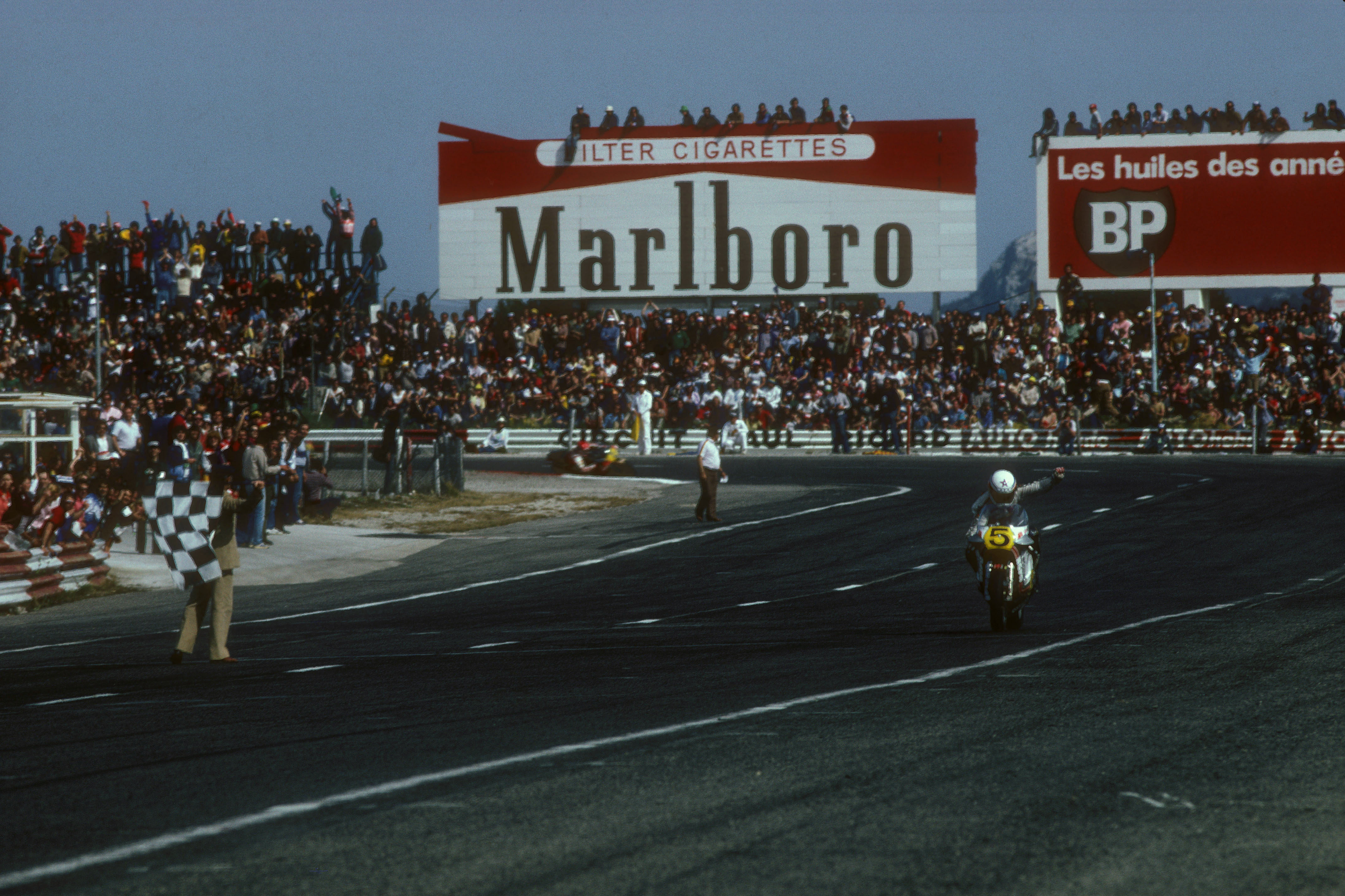
One look at how 500cc races were started at that time – with riders giving their bikes an actual, on-the-grid push start (which lasted until 1987) – should tell you that pole position didn’t guarantee much of anything.
But Marco Lucchinelli’s pole streak at least coincided with the run of form that took him to the 1981 title.
The six poles were translated into four wins. Among those were a Spa-Francorchamps triumph where Lucchinelli outfoxed reigning champion Kenny Roberts on the run to the final corner, and a win in an Imola race ended by a red flag for rain.
But it was the wet Dutch TT triumph that was the biggest building block. Four of Lucchinelli’s championship rivals exited through either mechanical failures (Roberts and Barry Sheene) or accidents (Randy Mamola and Graeme Crosby), and Lucchinelli reeled in and passed home hero Boet van Dulmen before winning by half a minute.
It was the first time in 1981 that he’d led the points, and he would never relinquish the lead – although it wasn’t as comfortable as it could’ve been either.
In the third-to-last race at Donington Park, Crosby crashed ahead of Lucchinelli and Sheene, taking down the latter and forcing Lucchinelli to run off the track and slam into a hay bale.
But his main rivals couldn’t fully capitalise – the race instead marked the final privateer win of the 500cc era courtesy of Jack Middelburg, while Lucchinelli won next time out in Finland and brought the title home.
Jorge Lorenzo, 2010
Yamaha
Average pole margin: 0.197s (5 races)
Champion? Yes
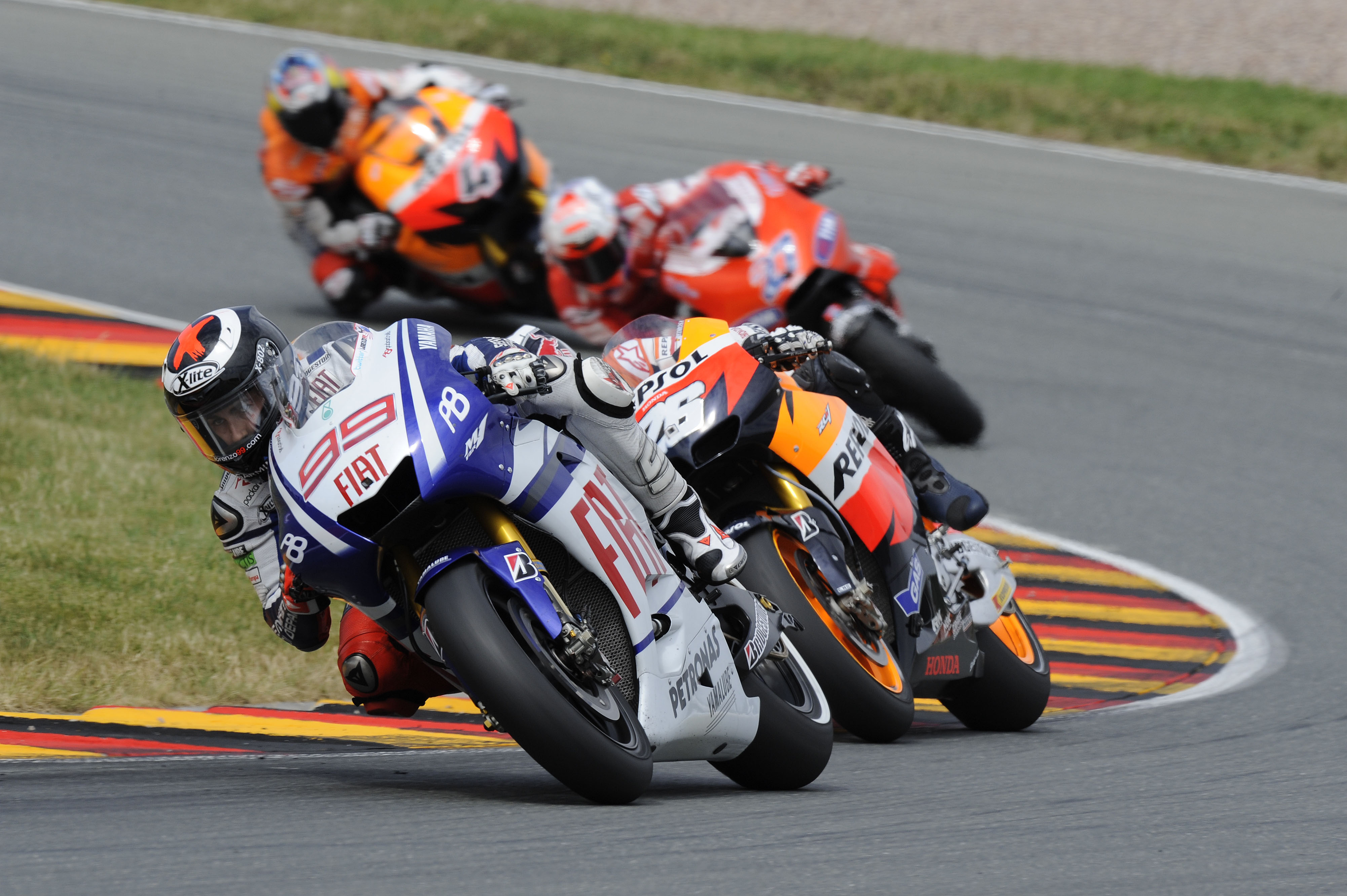
By the time Jorge Lorenzo scored his first pole of 2010 in the fifth race weekend at Silverstone, he was already the overwhelming title favourite.
Not only was he leading Pedrosa by 25 points, but reigning champion Rossi had removed himself from the contest by suffering a nasty fracture to his right tibia in a violent Mugello practice crash.
From Silverstone on, five poles on the trot then helped Lorenzo take complete control of the title battle. He led 99 (how fitting) out of 124 laps in those races, and though Pedrosa threatened to arrest his momentum by beating the Yamaha man at the Sachsenring, he then crashed while being chased by Lorenzo at Laguna Seca.
At the time Pedrosa ended Lorenzo’s pole streak at Brno, there was still half the season to go. But the points lead Lorenzo had amassed was already virtually unassailable – and he used the back half of 2010 to nearly double it.
Christian Sarron, 1988
Sonauto Gauloises Yamaha
Average pole margin: 0.827s (5 races)
Champion? No
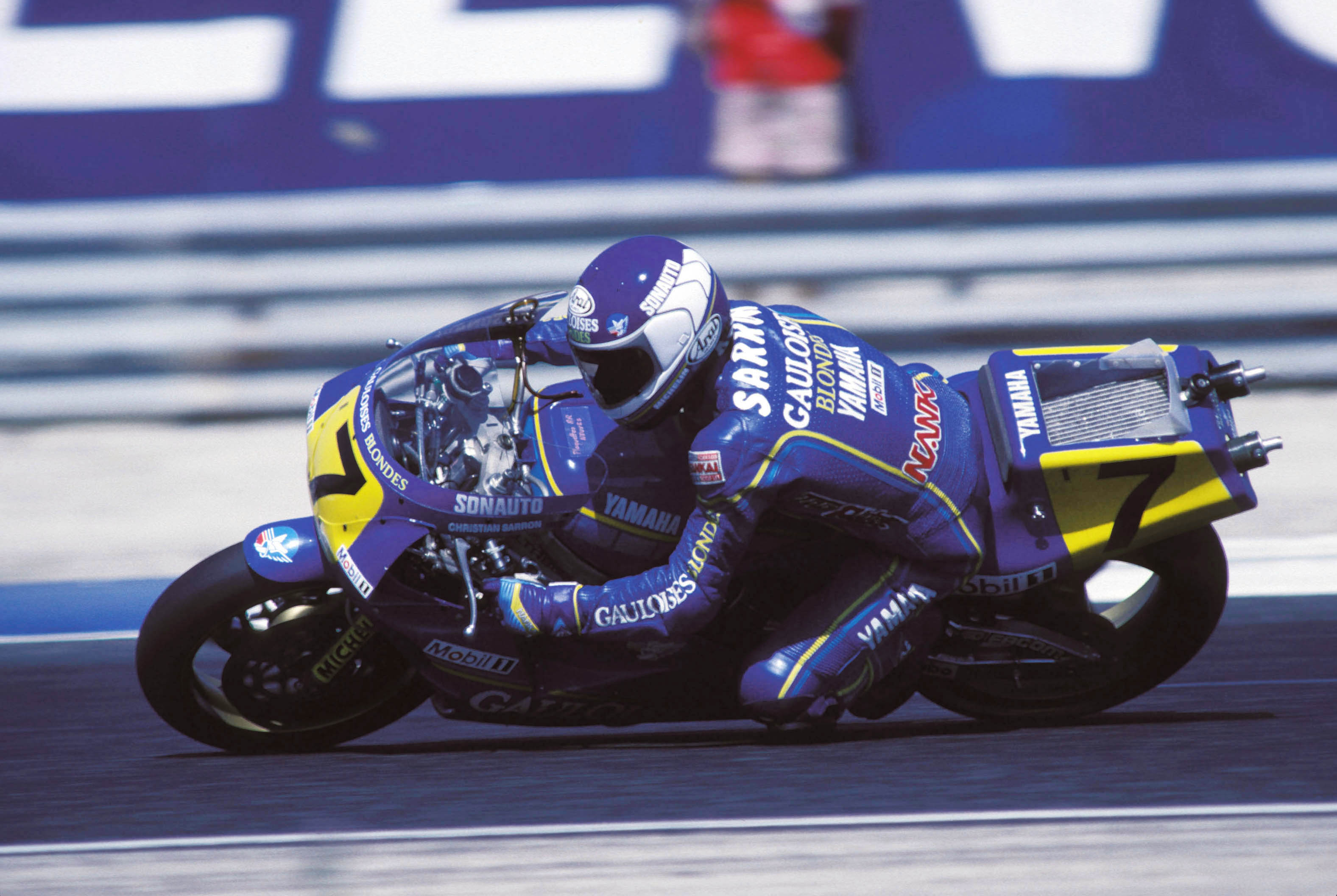
A 250cc champion in 1984, Christian Sarron scored six premier-class poles in his career. All but the first one were scored in consecutive races, in 1988. And none of them were converted into victories.
It’s not as surprising as it sounds. Pole in that time was simply a ticket to the five-bike parallel-formation front row, and Sarron’s starts were really quite bad.
But Sarron’s five 1988 poles did at least accurately reflect that he was rapid on the Gauloises Yamaha, and he really should’ve bagged at least one win.
Both at a damp Spa-Francorchamps and at Yugoslavia’s Rijeka circuit, Sarron would hound reigning champion Wayne Gardner for the lead lap after lap – but in the former case he tucked the front while running onto a grip-less white line adjacent to the kerb, and in the latter Gardner ultimately broke his resistance.
He battled Gardner for victory on home soil in France, too, but again the American mounted a breakaway, only for his bike to suddenly start spitting oil with mere corners to go. Sarron moved past – but so did eventual champion Eddie Lawson, who then fought Sarron off to win.
When the season concluded, Sarron was fourth, over 100 points down on Lawson, whose title-winning campaign featured just two poles in 15 attempts.
Casey Stoner, 2011
Honda
Average pole margin: 0.364s (5 races)
Champion? Yes
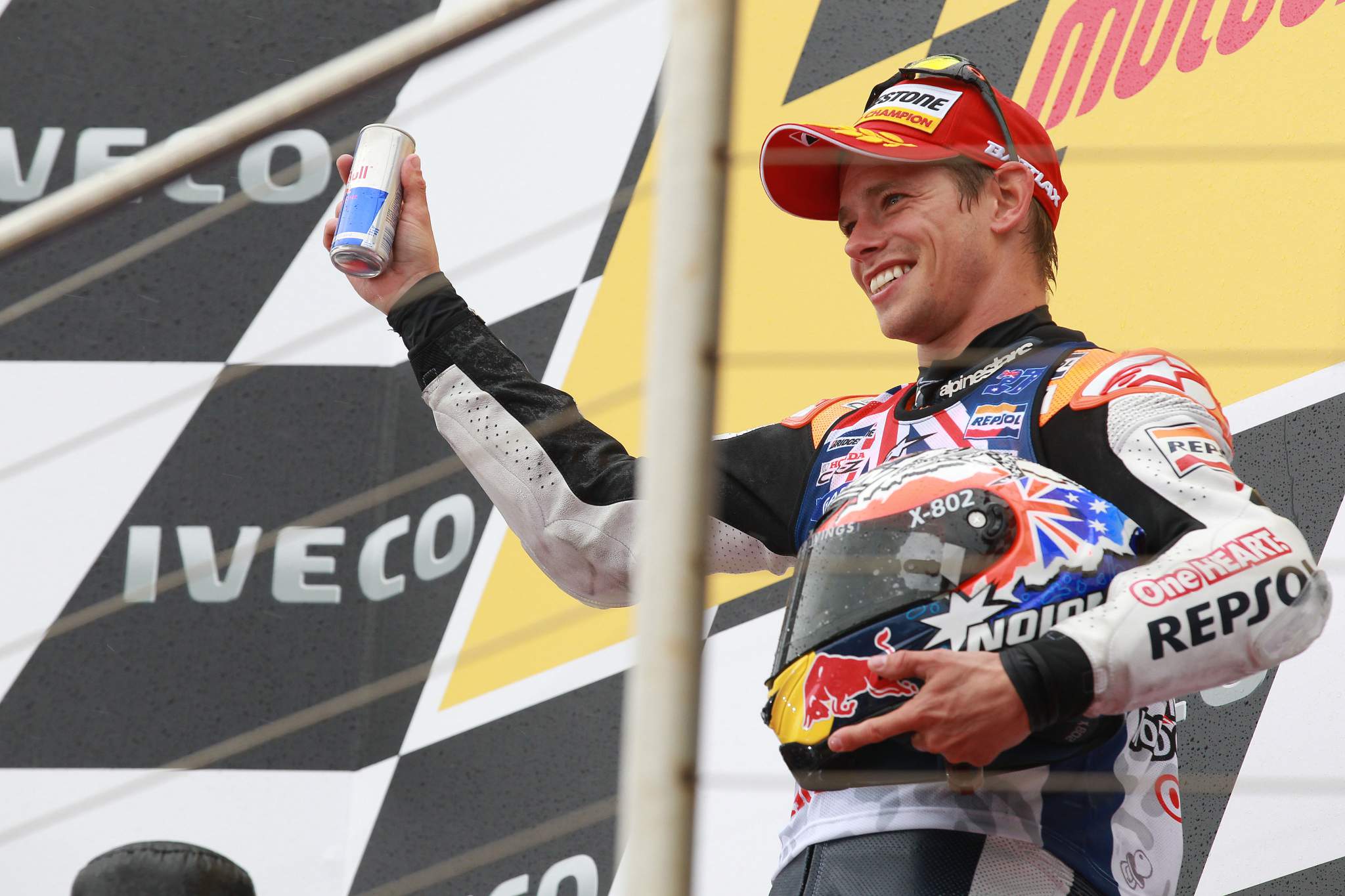
Stoner’s 2011 pole streak was a couple of races shorter than his 2008 one, but it certainly tasted a lot sweeter.
A second MotoGP title in his Honda debut season looked highly likely even before Stoner began to reel off pole after pole in the closing stages of the campaign.
Three of the five consecutive poles were converted into comfortable wins, and only being “too tired” at Mugello (not helped by a neck injury sustained earlier in the season) and a long gravel detour at Motegi prevented a clean sweep.
Completing the five-race streak was Phillip Island, where Stoner’s only remaining mathematical rival Lorenzo injured himself in a Sunday warm-up crash, allowing Stoner to seal the title later that day, on home soil, on what was his 26th birthday.
The circumstances of the coronation were marred somewhat by Lorenzo’s misfortune, but the triumph itself ranked higher than Stoner’s Ducati title.
“In 2007 people tried to belittle me a little bit, take the credit away from myself and my team, what we achieved,” Stoner would tell MotoGP.com. “Since then, especially this year, I think people really realised what we’ve got, what we’re capable of.”
Freddie Spencer, 1985
Honda
Average pole margin: 0.500s (9 races)
Champion? Yes
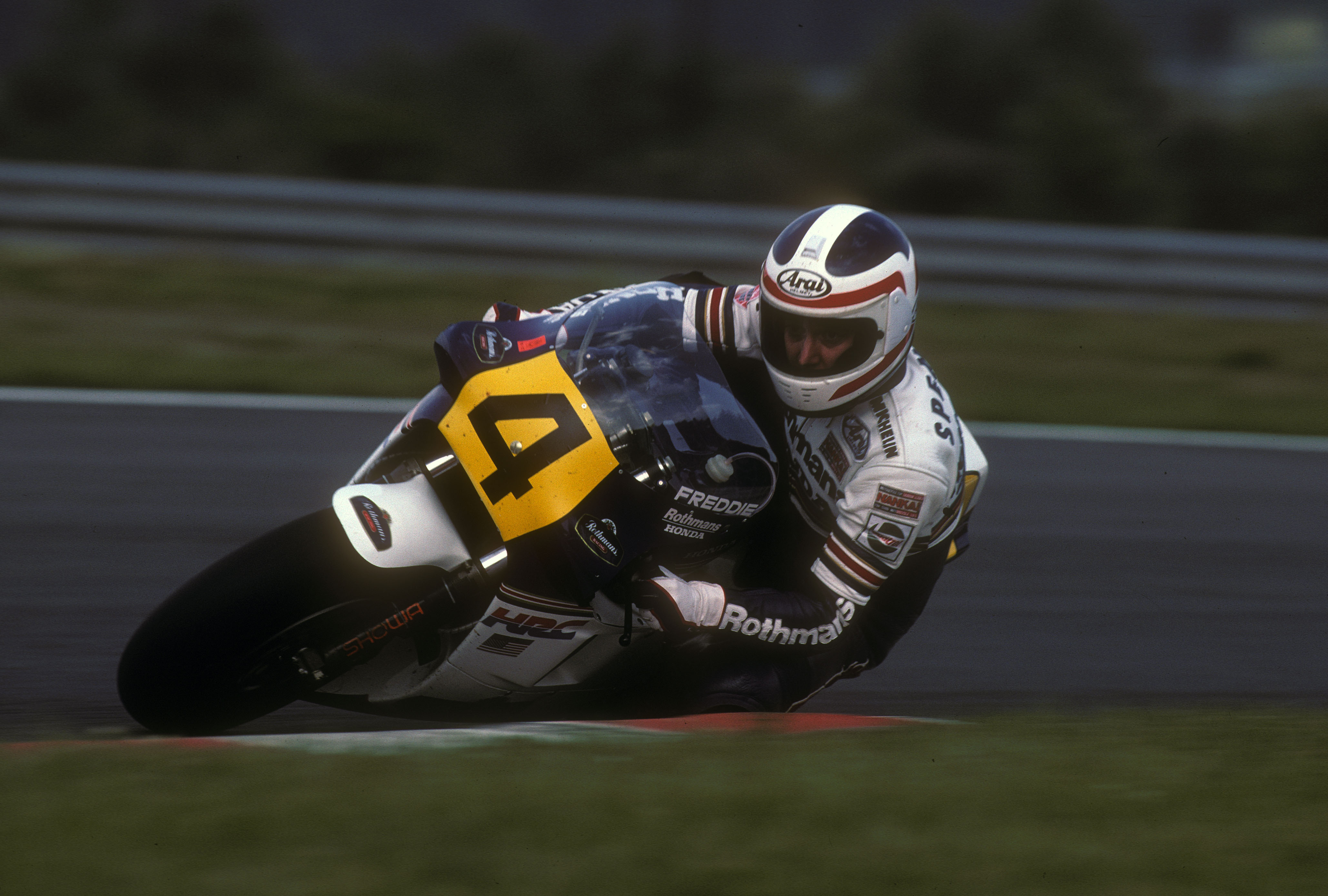
Long before he was a controversial chairman of the MotoGP stewards, ‘Fast Freddie’ Spencer had an excellent – if somewhat shortlived – grand prix career. And when equipped with a much-improved Honda V4 in 1985, he strung together the second-longest pole streak in (recorded) premier-class qualifying history.
The first pole of his run, at Hockenheim, actually translated into the first and only premier-class win for the aforementioned Sarron – who reeled in and passed Spencer from nearly 20 seconds back in the wet. But Spencer began to make them count after that, winning six of the next eight.
One of those wins was a remarkable Salzburgring triumph by 0.03s, that was nonetheless no photo finish – but rather the result of two race times, before and after a red flag, being stitched together to produce a combined classification that just favoured Spencer over title rival Lawson.
Yet there were two races in which Spencer’s title advantage easily could’ve evaporated. At Rijeka, he clipped a hay bale with his knee and spent the rest of the race in pain, but toughed it out to finish second. “That was the most difficult race I’ve been through,” he said.
But it was a wet Dutch TT that risked doing a lot more points damage, with Spencer taken down by a slow tip-off from Sarron, only for Lawson to even it out by then flying off into the straw bales while running second.
Spencer’s pole run only ended in the Misano finale, and that was because he was a no-show entirely – either due to the undoubted array of injuries or simple burnout, given it was the year that he ran two classes and already had both the 500cc and the 250cc title in the bag.
Wayne Gardner, 1987
Honda
Average pole margin: 1.186s (5 races)
Champion? Yes
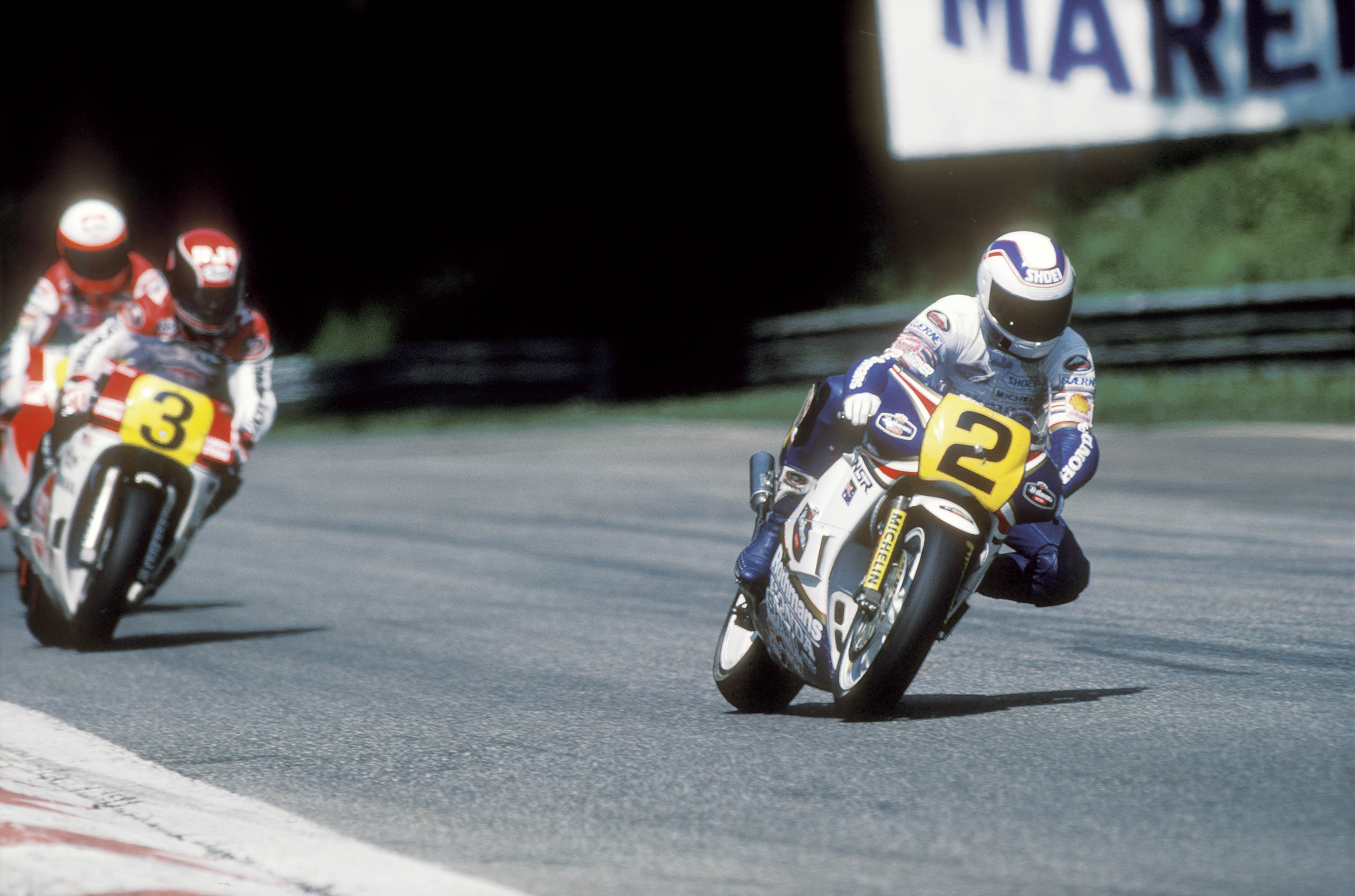
Having replaced a suddenly over-the-hill Spencer as Honda’s main man, Gardner took control of the 1987 title race by winning three GPs during his early-season pole streak.
Mamola and Lawson loomed large in his rearview mirrors for most of the season, however. This was partly due to Gardner tumbling down the order with reported overheating problems after starting from pole at Hockenheim – but it’s not as if his rivals had a clean run. Mamola was sent straight into a hay bale after clipping Rob McElnea at Monza, while Lawson endured a litany of mishaps that left his title defense in too big a hole.
In hindsight, it was potentially a blessing that Gardner – whose son Remy is about to step up to MotoGP with Tech3 KTM – sealed the 1987 title with a race to spare, given the organisational conditions surrounding the Argentina finale left riders aggrieved.
It was “a complete shambles”, according to Gardner, while an enraged Mamola was filmed shouting at Agostini – then Yamaha team manager – over the prospect of a riders’ boycott that ultimately didn’t materialise.
Kevin Schwantz, 1989
Suzuki
Average pole margin: 0.386s (6 races)
Champion? No
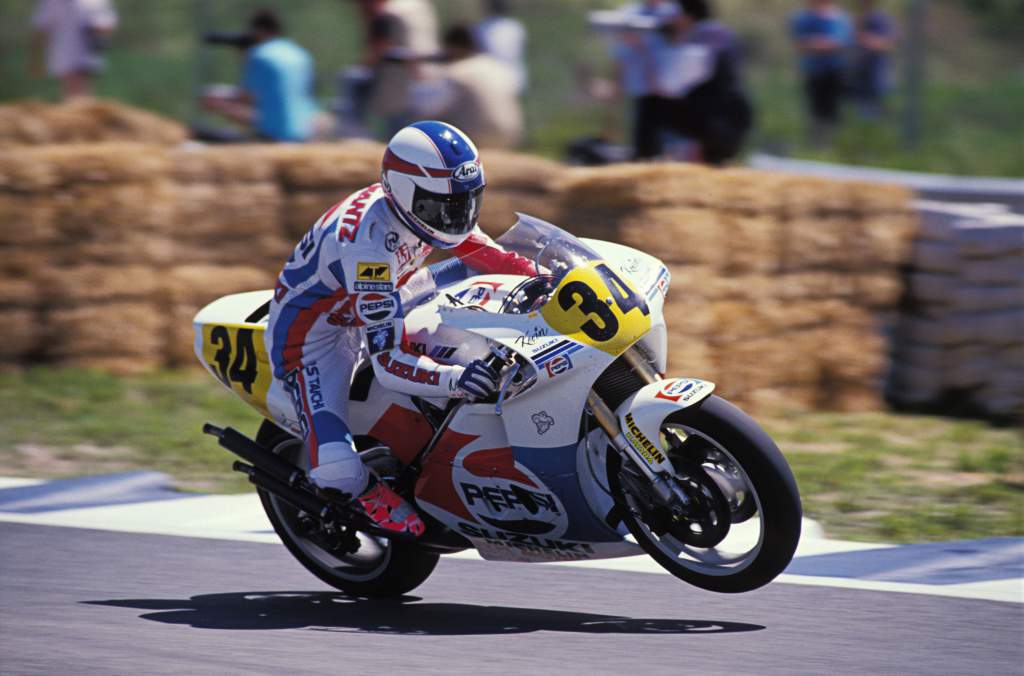
The weekend that kicked off Schwantz’s streak of six poles in 1989 had no chance of being remembered for that. Not when it culminated with the reigning champion Lawson sarcastically cheering the winner from the sidelines.
The top riders of the championship agreed almost unanimously that Misano was not safe enough in the wet, especially without prior wet-track test sessions, and so when the race was interrupted by rain almost all of them refused to take the restart.
But future World Superbike stalwart Pierfrancesco Chili felt compelled – maybe even obligated – to carry on, winning with ease against a field of privateers, his sole premier-class triumph met with barely-concealed disdain from the championship frontrunners.
“It didn’t have enough traction to even think about riding in the wet,” Suzuki rider Schwantz insisted. “It’s really a shame that some of the riders had to go out and race, one in particular. We all agreed, and I think we should’ve all stuck together – it’s a shame we couldn’t.”
Schwantz was leading the first part of that race when it was red-flagged. He was leading the previous one at Jerez, too, when he fell. Two big opportunities translated to two zeroes, and a late mechanical issue when battling for victory at the Hockenheim made it a third one. A couple of races later, another bike drama robbed Schwantz of a surefire Dutch TT win.
But Schwanz did convert two poles to victories, and so by the time eventual champion Lawson cut his pole run short at Le Mans, he had fully cemented himself as a 500cc star.
Mick Doohan, 1995
Honda
Average pole margin: 0.632s (6 races)
Champion? Yes
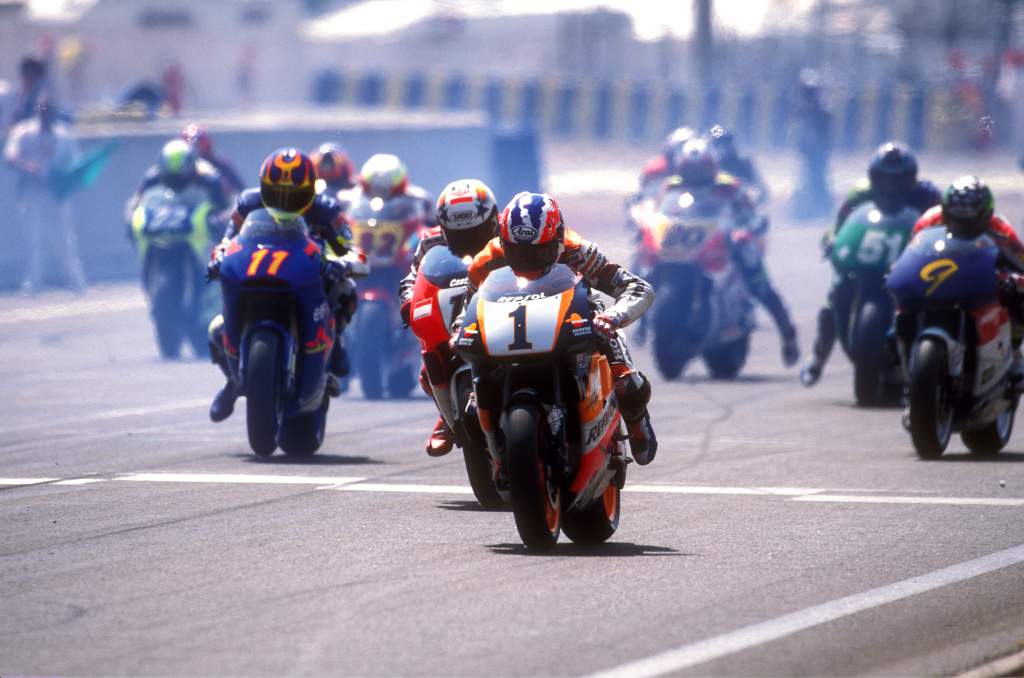
If the Doohan of the 1992 pole streak had his competition covered, the same could not be said for his 1995 pole run, in which his Suzuki-riding compatriot Daryl Beattie emerged as a massive thorn in his side. And remarkably, it was again an Assen crash that pivoted the title battle.
After fighting through to second place behind a comfortable pole-to-win Doohan in Australia and Malaysia, Beattie put him under pressure in the wet at Suzuka, in what became the victory battle after Doohan’s race-leading team-mate Shinichi Itoh crashed out.
Doohan looked like he would hang on, but dropped to third after catching what could’ve been a monster highside and having to go off-track, before rejoining and bravely picking off Takuma Aoki for second round the outside of the final bend.
At Jerez, Doohan did highside violently out of the lead, paving the way to current Honda MotoGP boss Alberto Puig’s sole premier-class win and for Beattie to lead the points despite a subpar Spanish GP.
That lead then grew to a pretty formidable 29 points when Doohan, having recovered from a terrible start to catch Beattie at the Nurburgring, crashed out just as he started to break away.
When Doohan’s bike then bucked wildly and compromised his early breakaway at Misano by taking him to the gravel, Beattie took over in the lead, and 1995 looked like it might just be his year.
But Doohan recovered, reeled in and passed Beattie, who then left the following Dutch TT weekend early with a broken collarbone.
Doohan’s pole streak ended that weekend courtesy of Alex Criville. It mattered little – he took the points lead from Beattie at the chequered flag, and only grew it with each subsequent race until the end of the season.
Marc Marquez, 2014
Honda
Average pole margin: 0.397s (6 races)
Champion? Yes
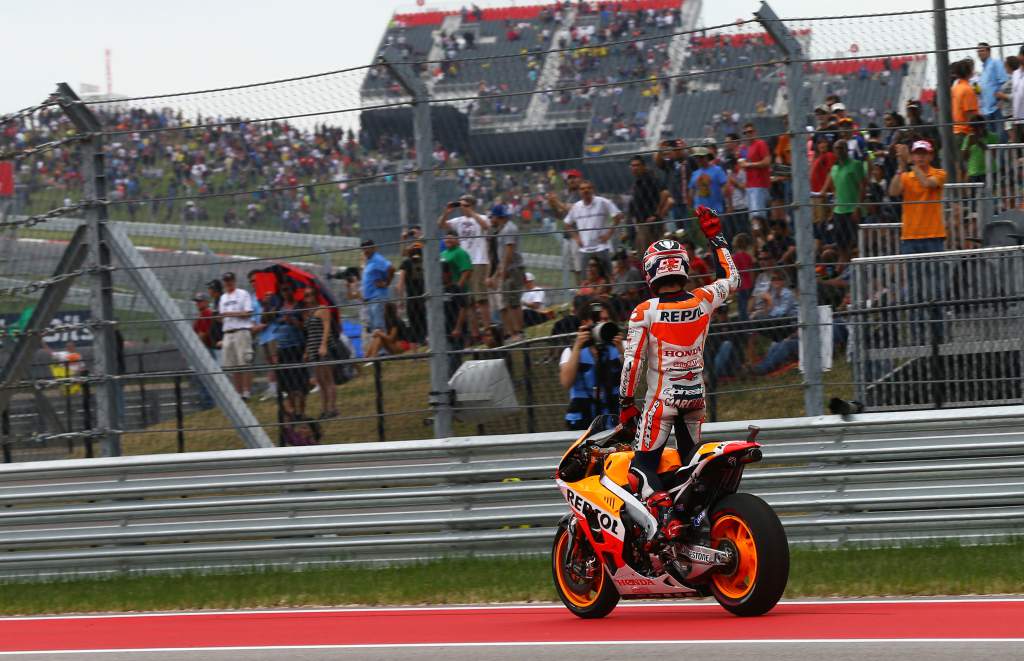
The 2014 season was one defined by Marc Marquez’s 10-win run to start the campaign, and his six poles in a row from the Qatar opener to Mugello facilitated that.
Qatar and Mugello, incidentally, were probably where he’d had to fight hardest for victory in that six-race stretch.
In the former, Lorenzo and Stefan Bradl crashing out of the lead simplified things somewhat, but he still had to see off Rossi in a late duel, while the Italian GP was decided in a sumptuous duel between Marquez and Lorenzo.
But it was another race from that run, the French GP, that really demonstrated just how comfortable Marquez was. He’d dropped out of the top 10 after a fairly rubbish overtake by Lorenzo forced him to sit up the bike, yet was already on the back of Rossi by lap 13, just before the halfway point. Rossi then ran badly wide at Garage Bleu, and that was that.
Marquez’s form did (relatively) fall off in the run-in to the season, but it didn’t prevent him from sealing the title with three races to spare.
Kevin Schwantz, 1993
Suzuki
Average pole margin: 0.440s (5 races)
Champion? Yes
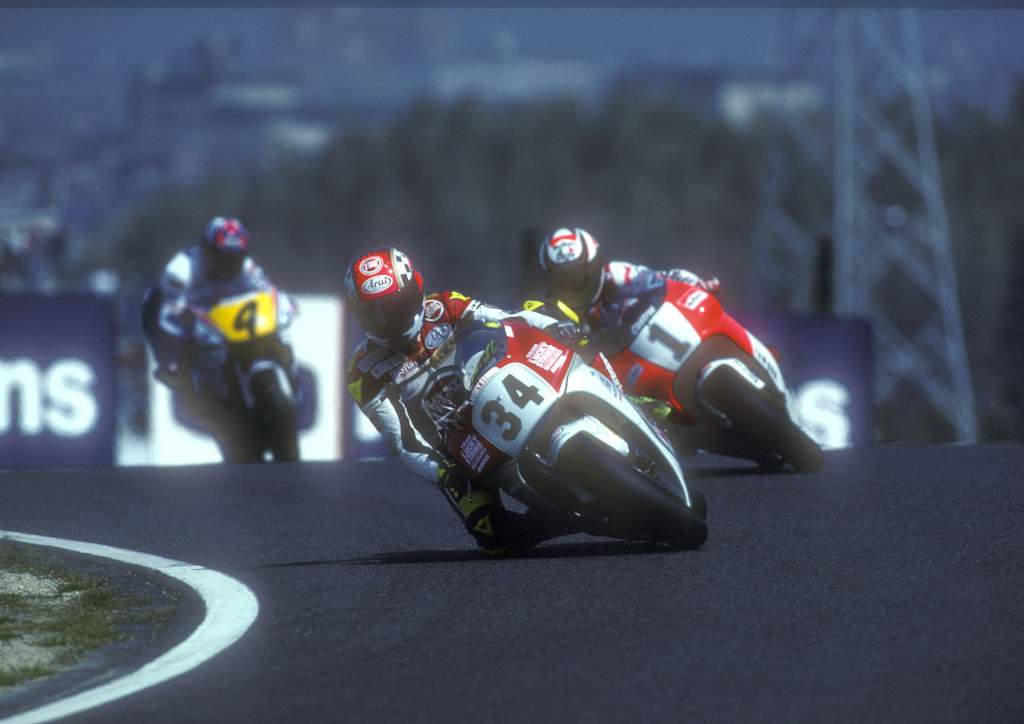
On pole for the 1993 season opener at Australia’s Eastern Creek (now Sydney Motorsport Park), Schwantz got a horrendous start and was outside of the top 10 entering Turn 1. But before even a third of the race had passed, the Suzuki man was already in the lead.
Yet Schwantz’s sole title-winning 500cc campaign would not be anywhere near as straightforward as that charge foreshadowed. Compatriot Rainey, fresh off three consecutive titles, was a nuisance for the rest of that Eastern Creek race – and when in Malaysia Schwantz got another poor start and slumped to 10th, he could only recover to third in a race Rainey dominated.
At Suzuka, Schwantz took pole by nine tenths, yet Itoh kept him busy in the opening laps, and Rainey ultimately pounced, before beating Schwantz by 0.086s in a photo finish.
Jerez, though, was another story – Rainey had no answer to the Suzukis, and Schwantz inherited the win when team-mate Alex Barros suddenly buckled and crashed out at what is now the Sito Pons corner with two laps to go.
But in Austria it would be Rainey who benefitted from a Barros mishap. While Schwantz did defeat Doohan for the win, Barros looked on for third but got held up by the uncooperative baby blue Yamaha of Juan Lopez Melia – and as he drew alongside Mella and proceeded to give the privateer a piece of his mind, Rainey snuck past.
When Schwantz’s pole streak snapped next time out, he and Rainey were split by just five points. He’d win just one more race for the rest of the season, and his title aspirations looked to have taken a potentially fatal blow when Doohan creamed into Barros under braking at Donington and bounced into Schwantz, the American banged up in the resulting somersault.
Yet Rainey’s crash from the lead at Misano left him paralysed from the waist down, and an all-time classic title fight was irreparably marred in the process.
Mick Doohan, 1997
Honda
Average pole margin: 0.400s (12 races)
Champion? Yes
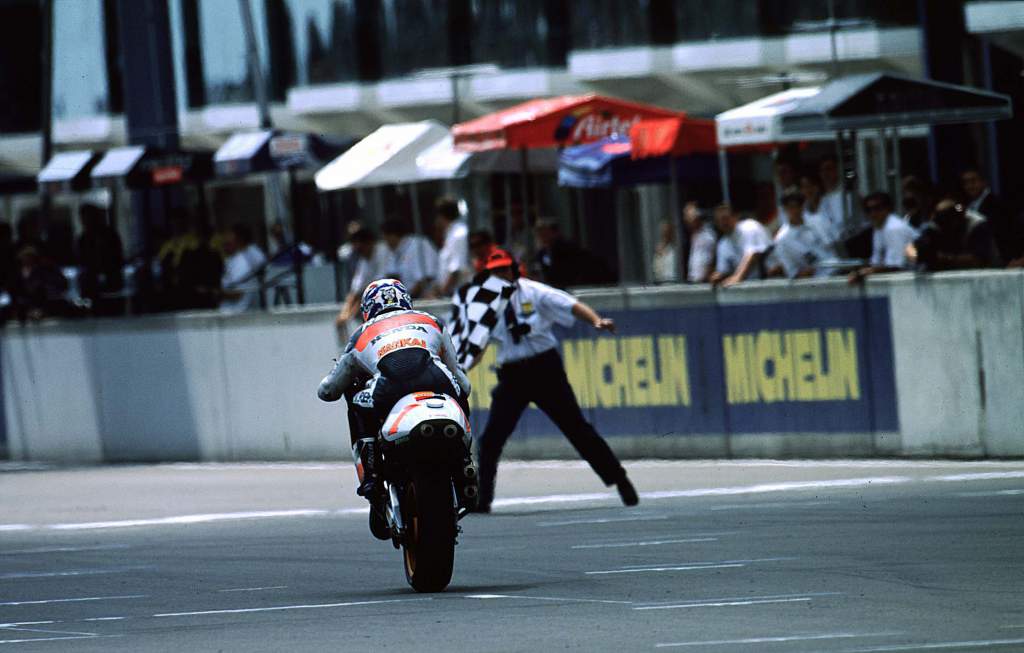
The 1997 season was the absolute peak of Honda’s 500cc dominance, as the Japanese marque won every race, locked out the podium nine times and managed a pair of frankly obscene 1-2-3-4-5-6s.
And it stood to reason that Doohan, fresh off three titles, was the fastest and most consistent of this contingent. Although the first three poles actually went to Tadayuki Okada over Doohan, the Aussie then claimed the next 12.
His already-straightforward path to the title was made even more straightforward when Criville, the only rider to beat Doohan in a 1997 dogfight while the title battle was still on, suffered a violent highside at Assen’s undulating Witterdiep kink and had his left hand basically crushed by his Honda.
Though he almost never led into the first corner, Doohan converted his first 10 poles into wins, before Okada – who had run him close at Rio and closer at Donington – finally secured his first 500cc win in Indonesia with a penultimate-corner pass on Doohan.
But the only real blot on Doohan’s 1997 copybook came in the season finale on home soil, as he handed the recovered Criville a second win by crashing from a commanding lead, despite his desperate attempts to lift his Honda with his knee while slowly sliding out with a tucked front.
Fabio Quartararo, 2021
Yamaha
Average pole margin: 0.099s (5 races and counting)
Champion? Wait and see
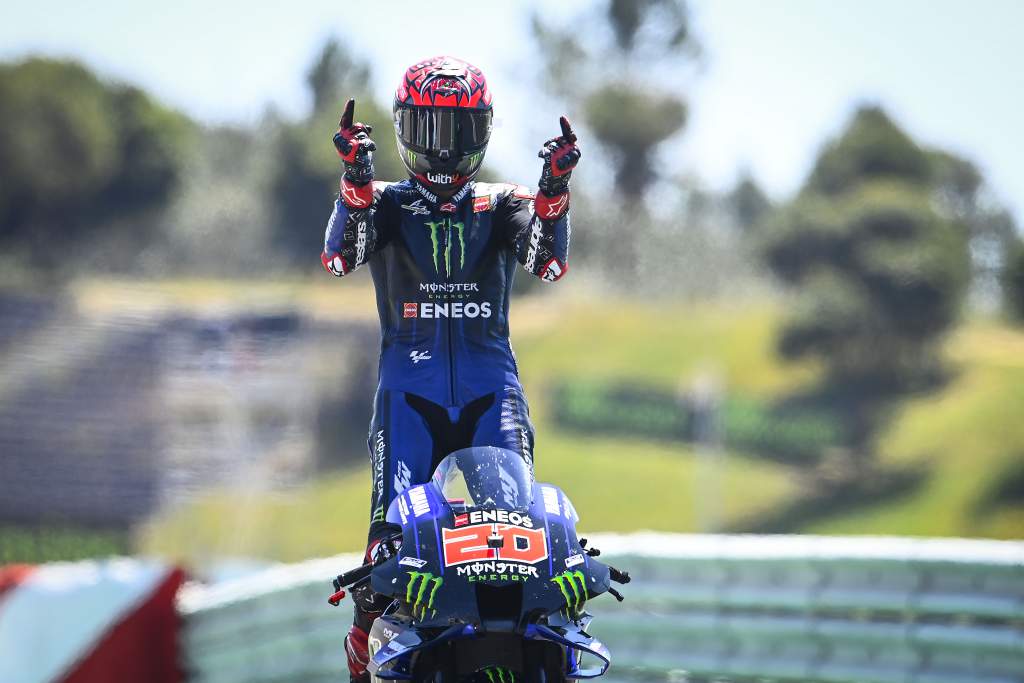
The good news for Quartararo is that the last three riders to get five or more consecutive poles won the MotoGP title with ease. Their era is most comparable to this current one, even if the grid is clearly so much more competitive.
The bad news is that there are a lot of ways to let a MotoGP title slip even if you’re very fast. But Quartararo knows this already, given the arm pump in Jerez and the zipper disaster in Barcelona.
Poles will not decide whether Quartararo wins the 2021 title. But he should be proud of his single-lap prowess all the same. Just a few years on from his Moto3 and Moto2 travails, he has already put himself in hallowed company, and is on early pace to become one of the greatest qualifiers in MotoGP history.
And if that pace holds up, simple correlation suggests the title will be his sooner or later.
Who made the most of their pole run?
| Rider | Bike | Races | Wins | Podiums | Pts%* |
| Marquez | Honda | 6 | 6 | 6 | 100.0% |
| Rossi | Honda | 5 | 4 | 5 | 96.0% |
| Lorenzo | Yamaha | 5 | 4 | 5 | 96.0% |
| Doohan (1992) | Honda | 6 | 4 | 6 | 91.7% |
| Doohan (1997) | Honda | 12 | 10 | 11 | 90.0% |
| Schwantz (1993) | Suzuki | 5 | 3 | 5 | 88.8% |
| Lucchinelli | Suzuki | 6 | 4 | 5 | 86.7% |
| Stoner (2011) | Honda | 5 | 4 | 5 | 85.6% |
| Spencer | Honda | 9 | 6 | 8 | 84.4% |
| Doohan (1995) | Honda | 6 | 3 | 4 | 79.3% |
| Gardner | Honda | 5 | 3 | 4 | 77.3% |
| Stoner (2008) | Ducati | 7 | 3 | 5 | 63.4% |
| Quartararo** | Yamaha | 5 | 2 | 3 | 63.2% |
| Biaggi | Yamaha | 5 | 1 | 2 | 54.4% |
| Sarron | Yamaha | 5 | 0 | 3 | 49.0% |
| Schwantz (1989) | Suzuki | 6 | 2 | 3 | 44.1% |
* Percentage of points scored by riders from the total available
** Streak ongoing
